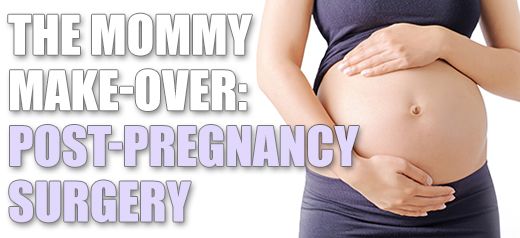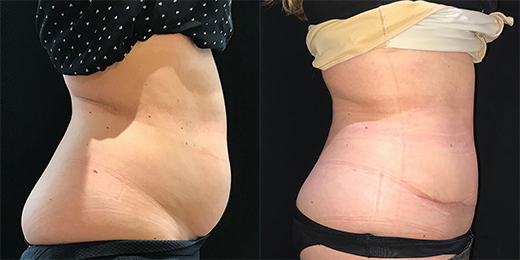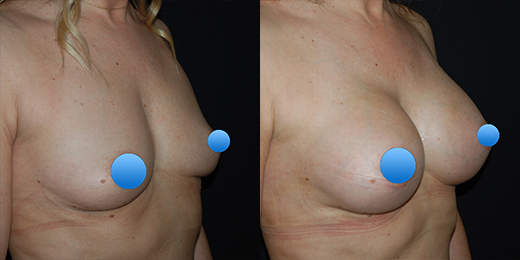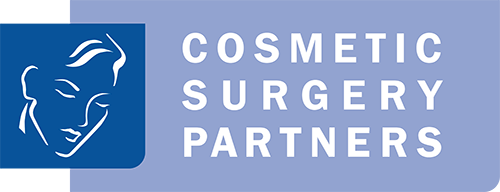The mommy make-over: post-pregnancy surgery

For many women in the UK, having a child is one of the most challenging yet most rewarding experiences of their lives. In 2016, there were over 650,000 babies born in England and Wales, with hundreds of thousands of new families being forged across the UK. The miracle of life and beginning your journey as a family, however, can alter a woman’s post-pregnancy beyond what she feels comfortable with. The stomach, breasts, thighs, and hips are all susceptible to stretch marks, sagging skin, and pockets of stubborn fat. Some women find their post-pregnancy body embarrassing, leading to a lowered self-worth that has the potential to be made worse by postnatal depression.
A ‘mommy makeover’, or post-pregnancy cosmetic surgery, proactively counteracts these changes via a combination of treatments. These purely biological and circumstantial changes are primarily addressed through procedures that far surpass diet and exercise. However, this isn’t to say that cosmetic surgery at our London-based clinic is an alternative to weight loss, but more that it is intended to treat particularly stubborn or resistant areas of concern.
The ideal candidate for post-pregnancy surgery
There are several key factors that we encourage all who are contemplating a mommy makeover to take into account: your current health, lifestyle, areas to target, and how your procedures will affect any plans. For example, ideal candidates are those who have successfully lost some weight after pregnancy but are unable to shed stubborn and localised pockets of fat. Sagging skin is also a key procedural area that is resistant to weight loss, which a lot of mothers experience around the lower abdomen.
How you gave birth to your child doesn’t necessarily limit your eligibility, either. Mothers who gave birth naturally are just as eligible for post-pregnancy surgery as those who underwent a C-section. In some cases, we are even able to help these mothers address scarring and blemishes resulting from their C-section. The one contraindication that we would caution against is undergoing a mummy makeover if you plan on having more children in the future. Receiving post-pregnancy surgery and then falling pregnant again will not impact yours or your child’s health in any way, but it could reverse the results of your cosmetic treatment. For younger mothers, it may be wise to wait a few years before making the final commitment to surgery for your procedures to be as cost-effective as possible.
Treating the post-pregnancy stomach
A large proportion of mothers find that their stomach’s appearance has changed after their pregnancy. Your baby bump has stretched your stomach muscles and skin, resulting in both becoming slightly looser. Sagging skin is common across your abdomen and hips, as are stretch marks and pockets of stubborn fat.
Liposuction and tummy tucks in post-pregnancy surgery
Liposuction lends itself very well to the removal of excess pockets of fat that have proven resistant to exercise and diet. Retaining post-pregnancy fat is natural because your body uses these stores to maintain energy and even burns through them when breastfeeding, but its stubborn longevity often upsets mothers. In areas such as the flanks, stomach, and thighs, liposuction successfully helps reinstate more youthful and sleeker bodily contours. Removing these areas of fat doesn’t help to address loose and sagging skin, however, which is where a tummy tuck would be best suited. After your skin has been stretched by your baby bump, especially if you had twins, triplets, or you are beyond your first pregnancy, it tends to retain this new loosened structure even after your baby bump has receded into normality. A tummy tuck is ideal for those seeking to lessen loose skin post-pregnancy, but also to lessen the appearance of C-section scarring.

Post-pregnancy breast augmentation
Your breasts are incredibly sensitive to hormones, leading to them growing and becoming sensitive during pregnancy. Post-pregnancy breasts, however, might lessen in size and resemble their original state, but a lot of mothers experience sagging or over-weighted breasts. Changes in the mammary glands and milk secretion lead to ptosis in the breast tissue – colloquially speaking, the sagging of the breast and down-turned nipple. It may appear that volume is lost from the upper portion of the breast, with the remaining falling to the bottom of it and pulling it down. In this instance, a breast lift combined with breast reduction could restore your chest and figure to a proportion resembling your pre-pregnancy body. More about breast augmentation surgery

Breast asymmetry post-pregnancy
Similarly, breasts can become asymmetrical and increase in size after pregnancy, never fully returning to their previous physical state. If your breasts are already asymmetrical or one of them has undergone surgery, for example, there is less or compromised breast tissue for the hormones to affect. Suggesting breast augmentation has and always will depend on the person receiving the surgery. Some women may perceive they’d benefit from a breast lift when actually their tissue distribution indicates that a reduction is the best course of action. Through careful consideration and professional consultation at Cosmetic Surgery Partners’ London clinic, our surgeons will endeavour to advise on the best course of action for your breasts. Read more about asymmetrical breast augmentation surgery or read an account of a patient who had the surgery at our London clinic.
The mommy makeover centres itself around a personalised surgical plan that takes into account your health, lifestyle, budget, needs, and time frame. Planning your surgical treatments and providing honest consultation is something that our skilled London-based surgeons are skilled in. Through empathetic care and personalised surgery recommendations, we uphold the high standards of the British Association of Plastic Reconstructive and Aesthetic Surgeons (BAPRAS) and the Royal College of Surgeons (RCS).
For more information on your mommy makeover and post-pregnancy surgery, book a consultation or speak to a member of our staff on 020 7486 6778.
Sources:






